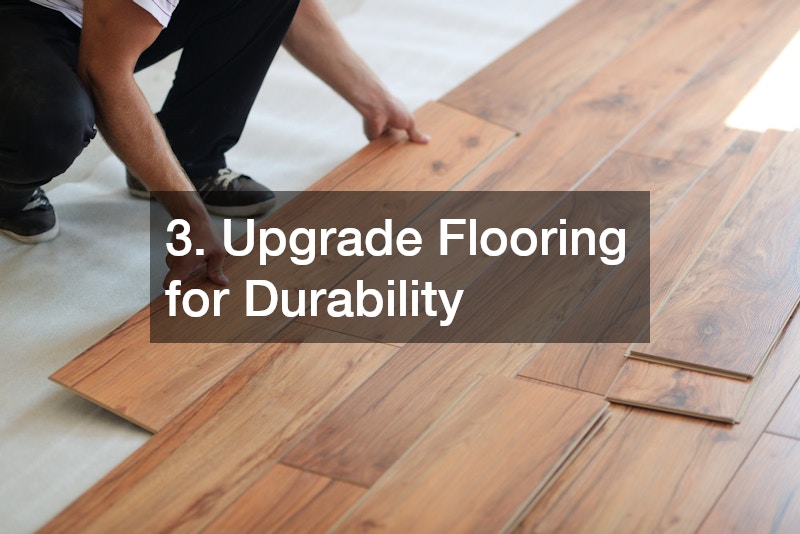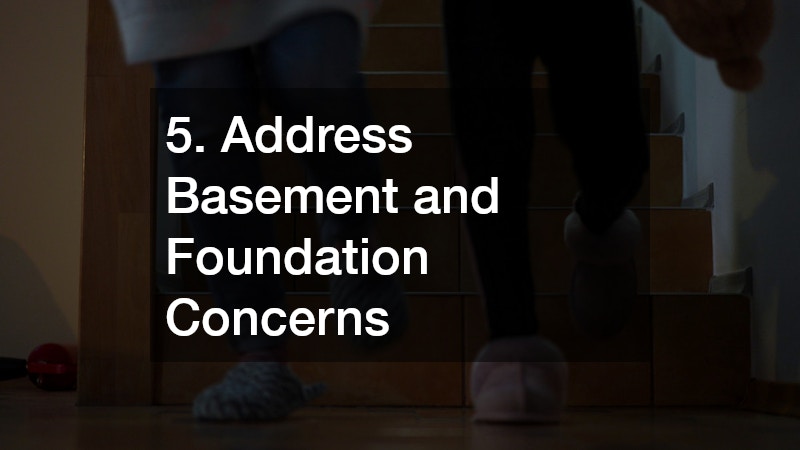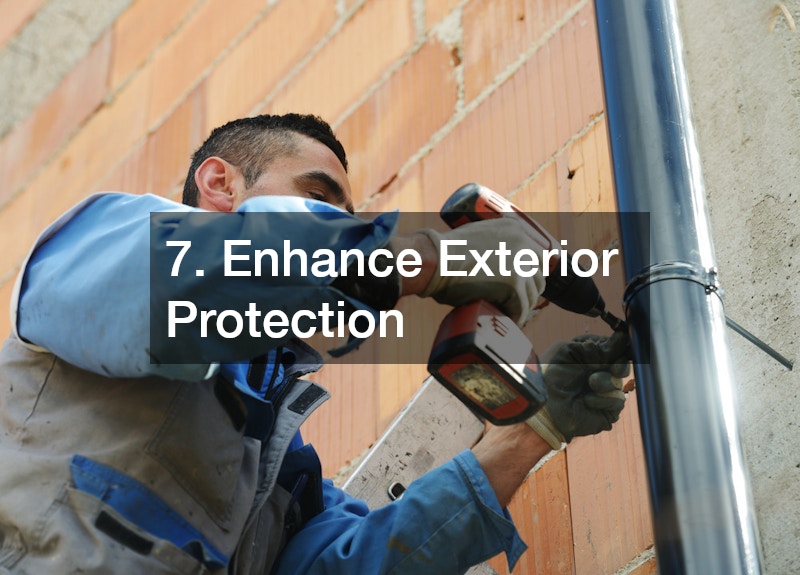Water damage can turn your home upside down, leaving not only visible destruction but also hidden problems that may persist if not properly addressed. From flooding in basements and crawl spaces to leaky roofs and damaged siding, water intrusion can compromise your home’s structure, weaken foundations, and create conditions for mold and mildew growth. Even small leaks can lead to warped floors, damaged drywall, and ruined insulation, while prolonged exposure can affect electrical wiring, plumbing systems, and HVAC components. For homeowners, the aftermath of water damage can feel overwhelming, stressful, and expensive, but it also presents a unique opportunity to rethink, redesign, and improve your home through strategic remodeling.
Whether your home has experienced minor leaks, burst pipes, or severe flooding, remodeling after water damage requires careful planning, professional insight, and a clear understanding of how to prevent future problems. Proper assessment, structural repairs, and moisture management are critical first steps, and working with trusted contractors ensures that your home is both safe and durable. Beyond repairs, remodeling gives you the chance to update materials, improve energy efficiency, and even enhance your home’s functionality and aesthetic appeal.
1. Start With a Thorough Assessment

Before diving into any remodeling, it’s crucial to assess the full extent of the water damage. Water can seep into walls, floors, and ceilings, sometimes leaving hidden areas vulnerable to mold or structural weakening. Professionals in water damage remediation can help identify these hidden issues and advise on the necessary repairs.
A thorough assessment often includes checking for compromised insulation, warped floors, weakened drywall, or damaged subflooring. Using moisture meters and thermal imaging, specialists can pinpoint areas of concern that might not be visible to the naked eye. This step ensures that your remodeling efforts are built on a solid foundation and prevents recurring problems.
In addition, addressing the source of water intrusion is key. Whether it’s water heater leaks, roof damage, or plumbing issues, identifying and fixing the root cause before remodeling protects your investment and ensures long-term success. A complete evaluation may also involve consulting foundation contractors if you notice cracks or settling in your basement or crawl spaces.
It’s also worth documenting the extent of the damage with photos and notes. This documentation helps when working with insurance providers and ensures that all repairs and upgrades are clearly planned. Moreover, involving experienced contractors early in the assessment can reveal additional improvement opportunities, such as integrating moisture-resistant materials or reconfiguring spaces for better drainage.
2. Focus on Structural Repairs First
Once the assessment is complete, prioritize structural repairs. Water damage can weaken critical components like beams, joists, and foundation walls. Addressing these issues before aesthetic remodeling ensures that your home is safe and stable.
Hiring basement waterproofers or a local waterproofing contractor can prevent future basement flooding and stabilize walls that may have been compromised. Similarly, roofing services may be needed if leaks have affected the ceiling or attic, and a reputable siding company can replace damaged exterior panels that let moisture in.
Structural repairs should always precede cosmetic updates such as flooring or painting. This approach reduces the risk of needing to redo work in the future and ensures that your remodeled spaces are built to last. Working with experienced professionals gives peace of mind, especially when dealing with water-compromised areas that may have hidden weaknesses.
It’s also smart to inspect joists, beams, and load-bearing walls for signs of rot or damage. Addressing even minor weaknesses during the remodeling process can prevent costly repairs down the line. Coordinating with multiple contractors—structural, plumbing, and exterior—is critical to create a comprehensive plan that addresses all water damage-related issues simultaneously.
3. Upgrade Flooring for Durability

Water-damaged floors often need complete replacement, and choosing durable, water-resistant materials is critical. Options like ceramic tile, luxury vinyl plank, or treated hardwood can withstand future spills and moisture exposure better than traditional hardwood or carpet.
In basements or areas prone to moisture, consider waterproof flooring and underlayment that resist mold and mildew growth. Coordinating with plumbers is important if your water damage stemmed from plumbing leaks, as ensuring pipes are properly fixed or rerouted prevents recurring problems under the new flooring.
Adding an insulating subfloor or moisture barrier also enhances durability. This step is particularly important if your home previously experienced flooding or persistent dampness. Selecting the right materials and professional installation ensures that your flooring investment will last and maintain both appearance and functionality.
For homeowners with pets or children, extra consideration should be given to slip-resistance and ease of cleaning. Additionally, integrating radiant heating beneath certain floor types can improve comfort and prevent cold, damp conditions that encourage mold growth.
4. Improve Drainage and Plumbing
Water damage often reveals weaknesses in a home’s drainage and plumbing systems. Installing or upgrading drain systems, sump pumps, and plumbing lines is essential to prevent future issues. A professional drain cleaning service can ensure your pipes are clear of clogs that might lead to leaks or backups.
If the damage was caused by water heater leaks or faulty plumbing, working with licensed plumbers ensures that all systems are repaired or replaced correctly. Properly maintained pipes and drainage systems reduce the likelihood of recurring water problems that could compromise your remodeling efforts.
In addition, consider upgrading fixtures and valves to modern, water-efficient options. Not only does this reduce water consumption, but it also minimizes stress on older plumbing that may be prone to leaks or bursts. Efficient drainage systems paired with updated plumbing help maintain a dry, safe home after remodeling.
When planning renovations, integrating additional drainage solutions such as French drains or channel drains can protect outdoor landscaping and prevent water intrusion near your foundation. Proactively addressing drainage now reduces potential headaches later, especially during heavy rain or snowmelt seasons.
5. Address Basement and Foundation Concerns

Basements and foundations are particularly vulnerable to water intrusion. After water damage, it’s crucial to ensure that your foundation is stable and that basement walls are protected against future leaks. Hiring foundation contractors and basement waterproofers can help resolve cracks, install proper drainage systems, and prevent moisture buildup.
Applying waterproof coatings and installing vapor barriers in your basement walls adds an extra layer of protection. Consider regrading soil around your home or installing exterior drainage solutions to direct water away from the foundation. These preventive measures protect your home’s core structure and enhance the long-term success of any remodeling projects.
For finished basements, selecting materials that resist moisture—like vinyl flooring, concrete epoxy coatings, or waterproof paint—prevents mold and deterioration. Even small enhancements, like raising electrical outlets above potential flood levels, increase safety and longevity. Proactively managing foundation and basement conditions protects both your home and your remodeling investment.
6. Upgrade Your Walls and Ceilings
Walls and ceilings often suffer from visible water damage, including stains, peeling paint, and weakened drywall. Removing compromised materials and replacing them with moisture-resistant drywall or panels is critical.
If the water damage came from the roof or upper levels, coordinating with roofing services ensures that leaks are fully addressed before replacing ceilings. Adding insulation during wall repairs can improve energy efficiency and comfort, while also preventing condensation and mold growth in the future.
For bathrooms, laundry rooms, and kitchens—areas prone to leaks—consider using mold-resistant paint and waterproof backing materials. These updates enhance durability and protect your investment in the remodeled space. Proper installation and professional finishing ensure that your walls and ceilings remain sturdy and visually appealing.
Also, consider incorporating features like easy-to-clean surfaces, recessed shelving, or ventilation systems to improve functionality and reduce moisture accumulation. These thoughtful design elements add both convenience and long-term protection for your remodeled rooms.
7. Enhance Exterior Protection

Water damage doesn’t just affect the interior. Compromised siding, gutters, and roofing can leave your home vulnerable to further problems. Partnering with a siding company or roofing services to replace or repair damaged exterior elements is essential for long-term protection.
Adding flashing, sealants, or upgraded gutters can help direct water away from vulnerable areas. Regular maintenance of the exterior, including inspections for cracks or loose panels, prevents minor issues from escalating into major water damage events.
Exterior remodeling after water damage offers the dual benefit of improving your home’s appearance while strengthening its defenses. By addressing the envelope of your home, you reduce future risks and enhance the overall value of your property. Incorporating landscaping adjustments, like proper grading and drainage channels, also protects the foundation and exterior siding.
8. Install Modern Water Detection and Safety Features
One of the smartest ways to prevent repeat water damage is to invest in modern detection and safety systems. Installing leak sensors, smart water shut-off valves, or integrated home monitoring can alert you to problems before they become catastrophic. Leak detection services help identify hidden leaks in pipes, water heaters, or appliances, giving you the chance to act early.
Upgrading to water-efficient fixtures and appliances further reduces the likelihood of flooding. Homes that integrate smart systems can be monitored remotely, providing peace of mind for busy homeowners. Combining early detection with professional monitoring ensures that your remodeled home remains protected long after repairs are complete.
Smart home integration can also track humidity levels in basements or crawl spaces, alerting you to potential mold growth or condensation issues. These systems are especially valuable for homeowners who travel frequently or have unpredictable schedules.
9. Focus on Mold Prevention
Mold growth is one of the most serious and persistent side effects of water damage. Even after visible water is removed, moisture can linger in walls, floors, ceilings, and HVAC systems, creating the perfect environment for mold to develop. Mold not only damages building materials but can also affect indoor air quality and pose health risks, including allergies, respiratory issues, and other complications. Professional water damage remediation teams can thoroughly treat affected areas using mold-resistant products, antifungal solutions, and advanced cleaning techniques to remove existing spores and prevent regrowth.
When remodeling, it’s important to incorporate materials that resist moisture. Options like moisture-resistant drywall, treated wood, and mold-inhibiting paints help prevent mold from forming behind walls or under floors. Installing water-resistant flooring in basements, bathrooms, and laundry areas adds another layer of protection. Proper ventilation is equally critical; exhaust fans, operable windows, and well-placed air vents help keep air moving and reduce humidity. Dehumidifiers, particularly in basements and enclosed spaces, maintain optimal moisture levels and deter mold growth before it becomes a problem.
Addressing mold during remodeling not only improves indoor air quality but also protects your family’s health and prevents costly remediation in the future. Ignoring minor signs of mold can lead to hidden infestations that compromise insulation, wood framing, and drywall, requiring expensive repairs down the line.
10. Plan for Long-Term Maintenance
Finally, after remodeling, establish a plan for long-term maintenance to protect your home from future water damage. Schedule regular inspections of your roof, plumbing, foundation, and drainage systems. Coordinating with professionals such as plumbers, foundation contractors, or local waterproofing contractors ensures that potential issues are caught early.
Additionally, keeping a log of repairs and improvements helps you track your home’s history, providing valuable insight for future remodeling or resale. By combining proactive maintenance with professional support, you can enjoy a safe, beautiful home without worrying about recurring water damage.
Regular preventive measures, including periodic drain cleaning services and checks for water heater leaks, maintain the integrity of your home. Consider routine evaluations by basement waterproofers or specialists in exterior maintenance to address minor concerns before they escalate.
Remodeling after water damage can feel daunting, but with careful planning, professional guidance, and smart strategies, it’s an opportunity to improve both the function and aesthetics of your home. From structural repairs and waterproofing to mold prevention, flooring upgrades, and exterior improvements, each step contributes to a safer, more resilient living space.
By incorporating these solutions, homeowners can prevent future damage while enjoying modernized, functional spaces. Paying attention to maintenance and using professional water damage remediation ensures that your investment lasts for years.
With these ten strategies, you can turn the stress of water damage into a chance to remodel smarter, protect your home, and create a safe and beautiful environment for your family. Remodeling after water damage doesn’t just restore your home—it improves it and makes it more resilient than ever.

